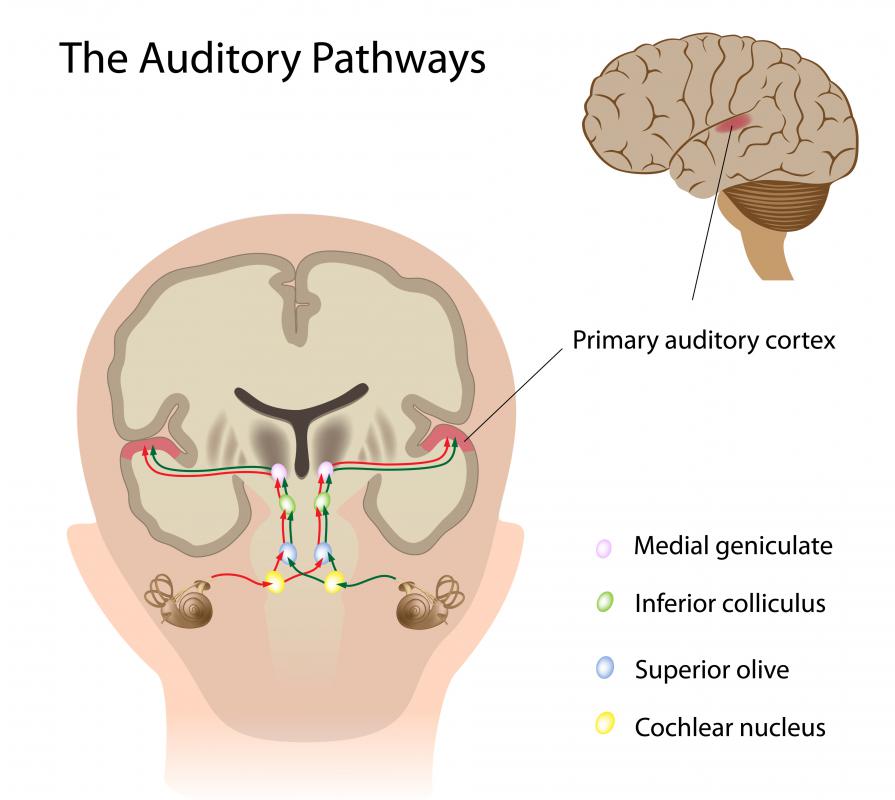At WiseGEEK, we're committed to delivering accurate, trustworthy information. Our expert-authored content is rigorously fact-checked and sourced from credible authorities. Discover how we uphold the highest standards in providing you with reliable knowledge.
What is Auditory Response?
An auditory response is brain wave activity that allows the brain to discern sounds that travel from the ear through the auditory nerve to the brain. Physicians typically use an auditory brainstem response test to evaluate auditory response and a child’s level of hearing loss. The test measures brain activity after sounds are played into a patient’s ear. This test often identifies hearing loss that is caused by an ineffective auditory response. People with hearing problems may have sensorineural or conductive hearing loss.
The auditory brainstem response test identifies sensorineural hearing loss in many instances. People with sensorineural hearing loss may have problems with the auditory nerve or the cochlea in the inner ear. The cochlea has tiny specialized hairs that transmit sound through the inner ear. Sensorineural hearing loss can be related to problems with the cochlear hairs. This type of hearing loss may be present at birth and is permanent in many cases.

A patient who takes the auditory response brainstem test has several electrical leads attached to his head. The leads are connected to a computer that measures brain wave activity, and an earphone is usually worn on each ear during this test. Patients are normally asleep during this test, and they may receive a sedative. Doctors measure brain waves when soft sounds are piped into each of the earphones. Physicians may recommend dietary restrictions for children who are about to undergo this test.

People may experience conductive hearing loss that is not related to an auditory response in the brain. Conductive hearing loss is generally caused by a disruption in sound transmission between the outer ear and the middle ear. Three tiny bones normally transmit sounds inside the ear, and these bones may not conduct sound signals properly in patients with conductive hearing loss. In some cases, improper vibrating of the eardrum or fluid inside the middle ear can also cause this type of hearing loss. Many people with partial hearing loss may experience improved hearing with a hearing aid or a cochlear implant from a medical doctor.

Ear infections are a common cause of conductive hearing loss in children. Children with ear infections typically have fluid inside one or both ears. Parents usually consult a doctor to determine the cause of hearing loss and the reason for fluid accumulation in a child’s ear. Other people may develop temporary hearing loss due to a build up of wax inside the ears. Ear syringes that are sold over the counter in many drugstores are generally used with warm water to gently flush wax out of the ears. Impacted earwax may often be removed with a wax softener or with the help of a doctor.
AS FEATURED ON:
AS FEATURED ON:













Discuss this Article
Post your comments